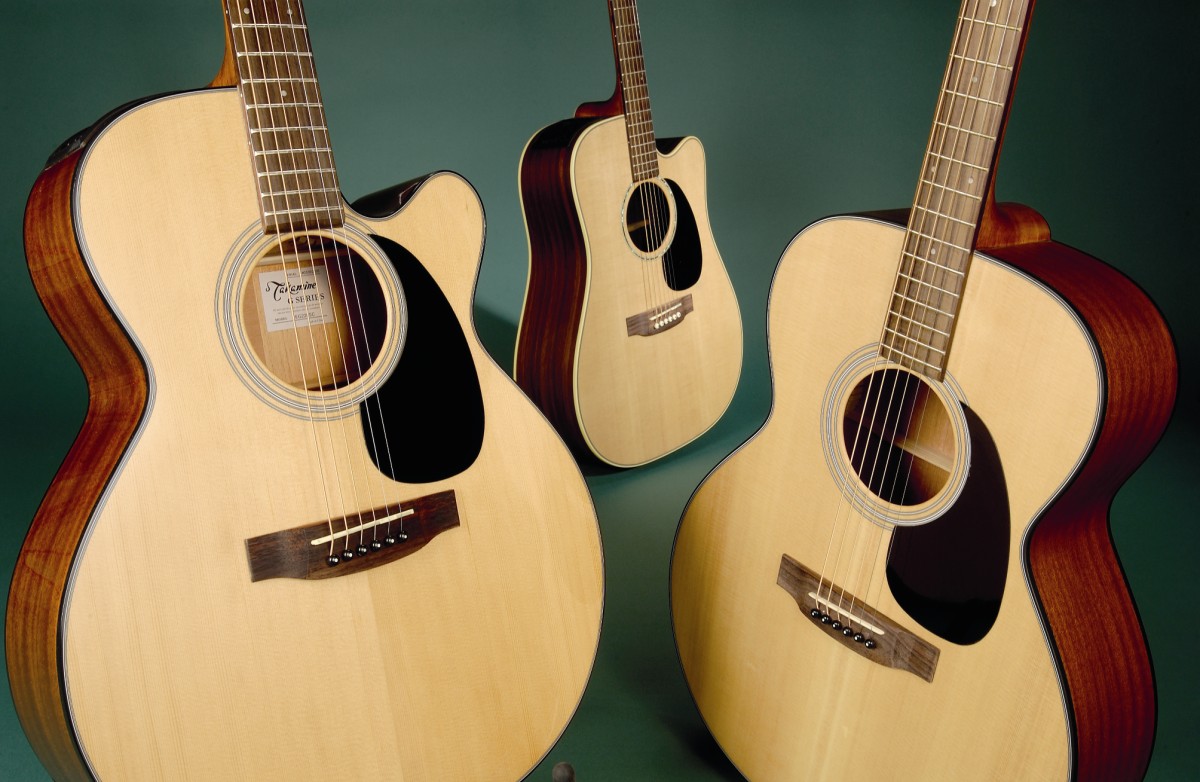MusicRadar Verdict
The price is pitched at a spot-on level for what you're getting.
Pros
- +
Good solid acoustic tone. Impressively equipped preamp.
Cons
- -
Pickup system is very sensitive to percussive plucking.
MusicRadar's got your back
With most major guitar manufacturers now using Chinese facilities in order to remain competitive, Takamine has sensibly followed suit.
Production of high-end models will continue in Japan, but G Series acoustics will now be built in China (as well as Korea and Taiwan).
Korg UK (Takamine's UK distributor) endeavours to keep its Takamine range as logical and well-pruned as possible.
But there may be some confusion as residual stock of certain discontinued G Series models will still be on sale while lower-priced Chinese-built replacements start appearing, some with the same model codes. So how do does this new arrival shape up?
Overview
Inside, it's clean and generally shipshape with just the odd patch of hasty woodwork. We find non-scalloped soundboard bracing in a traditional layout, with the main 'X' struts being tall and triangular(-ish) in cross-section for lightweight rigidity.
Generic tuners feel solid enough, but the gears are a bit sticky.
Typically, the bridge is left slightly rougher than the fingerboard, but is otherwise tidy. However, the saddle does lean forward in its slightly baggy slot.
The all-over satin finish looks very even despite the odd pimply patch. It's applied after the neck is joined, but it's a fairly thin coating and doesn't pool in the crevices.
For G Series models, Takamine uses a simpler integrated saddle/pickup (the same as Ovation's Thinline unit).
This Chinese incarnation of the EG330SC carries the new TK-40 preamp (a repackaged version of the TK4NT, now more like the units on the Japanese models), which sports a large, very visible LED window for the tuner's pitch indicator. I
ts knobs, sliders and buttons feel a bit flimsy, but it neatly packs a lot of useful features in.Takamine necks are narrow but deep, with a fairly straightforward 'C' prfile.
This one's shaft depth tapers from just under 23mm (first fret) to just under 25mm (10th fret); a bit plumper than the Japanese Takamines. String spacing is a bit cramped.
This example's finely finished fingerboard and frets prove as smooth as they look, and although the fret ends aren't obsessively manicured there are no snags.
An intelligently set neck angle, as found here on the EG330SC, allows both a manageable action and plenty of height on the saddle.
This bodes well for future adjustments and is beneficial to tone. The fingerboard and frets may not be up to Taylor standards of evenness, but you can still appreciate a fair bit of precision for the price.
Sensibly, the saddle is compensated, so intonation is pretty tuneful high up, and it's both easy and comfortable to play in the cutaway region.
Sounds
We hear a really broad tonal spectrum emanating from this dreadnought - from big, warm (if slightly boingy) bass to surprisingly sweet sparkling treble, but it's the woody earthiness of the overall sound that really impresses.
Slightly scooped in the mid frequencies, it does naturally exhibit notable Takamine traits, and the unwound strings do sound a bit thin and compressed on the high notes, but in the balance it all seems to work.
The saving grace is that there's no scratchy edge to the treble registers, so it all sounds easier on the ear. Loud but not too boomy, clear but not piercing, it's probably at its best delivering a balanced wash of strummed-up sound, but intricate fingerpicking is carried well and lead lines are really snappy.
Through the pickup system we are slightly compromised by a quiet bottom E string, but it's a decent, full-sounding piezo transducer that does capture the breadth and flavour of the acoustic tone. However, it is very sensitive to any kind of percussive string plucking.
“I said, ‘Are we sure we can write a song about death?’”: The story of Mike + The Mechanics' classic No.1 The Living Years
“Without investment in music education our talent pipeline is at risk of drying up along with the huge opportunities for economic growth it brings”: UK Music draws up five point plan to “turbocharge” music education
“How daring to have a long intro before he’s even singing. It’s like psychedelic Mozart”: With The Rose Of Laura Nyro, Elton John and Brandi Carlile are paying tribute to both a 'forgotten' songwriter and the lost art of the long song intro










